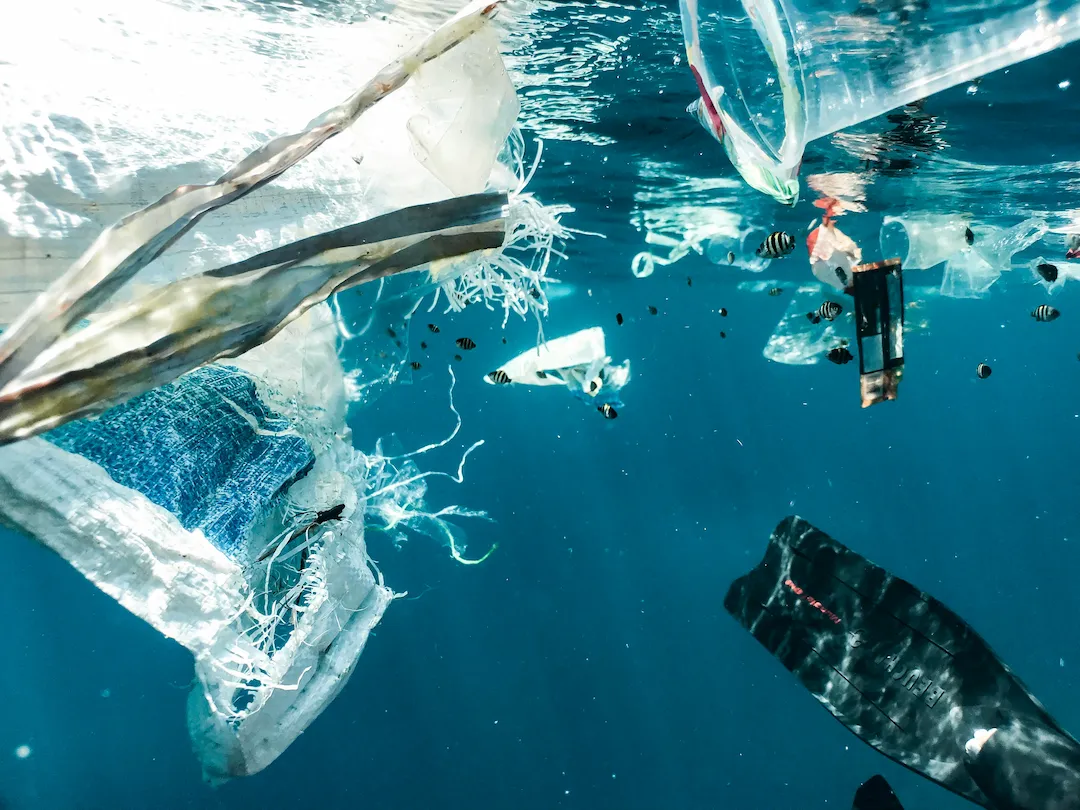 Plastic Pollution and Recycling
Plastic Pollution and Recycling

Each year, an estimated 11 million metric tons of plastic waste enters our oceans¹. Without major global intervention, that number could nearly triple by 2040, reaching 29 million metric tons annually¹. That’s the equivalent of dumping a garbage truck full of plastic into the sea every minute².
This World Oceans Day, we can’t afford to just “celebrate” the ocean—we must rally to protect it.
The ocean is earth’s life support
The ocean is more than scenic beauty—it is vital infrastructure for life:
- Covers over 70% of the planet’s surface².
- Produces 50–80% of the world’s oxygen, largely via phytoplankton³.
- Absorbs about 30% of human-caused carbon dioxide emissions⁴.
- Feeds over 3 billion people as a primary source of protein².
- Supports the livelihoods of over 60 million people in small-scale fisheries².
Yet we return the favor with trash. A lot of it.
Our oceans are absorbing the consequences of a system that treats plastic as disposable and people as optional. World Oceans Day should be a wake-up call to reimagine our relationship with both.
Plastic pollution is a global health crisis
Marine plastic pollution now affects over 1,000 marine species, with animals suffering from ingestion, entanglement, or habitat degradation².
Even worse, it’s coming back to us.
- Microplastics have been found in fish, table salt, bottled water, human blood, and even the placenta⁵.
- Scientists estimate the average person may be consuming up to 5 grams of plastic per week—about the weight of a credit card (WWF)⁶.
This isn’t just a wildlife issue. It’s a human issue, a health issue, and a justice issue.
The communities most exposed to plastic pollution are often the least responsible for creating it. Solving this crisis means shifting from extraction and exploitation to equity and regeneration.
Proof that Intervention works
We know change is possible—because it’s already happening.
Community-Led Marine Recovery in Cabo Pulmo, Mexico
In the 1990s, the reef at Cabo Pulmo was nearly lifeless due to overfishing. Local residents took action, advocating for protection and establishing a no-fishing zone in 1995. Within a decade, fish biomass increased by over 460%, making it one of the most successful marine protected areas globally⁷. This transformation not only restored biodiversity but also revitalized the local economy through sustainable tourism.
Coral Comeback in Indonesia’s Hope Reef
Off the coast of South Sulawesi, Indonesia, reefs devastated by dynamite fishing were restored using hexagonal steel structures known as “reef stars.” Spearheaded by Mars Inc., this initiative saw coral cover increase from 2% to 70% in just four years, with fish populations rising by 260%⁸. This project exemplifies how innovative restoration techniques can rapidly rejuvenate marine ecosystems.
Plastic Bank’s Global Impact
Plastic Bank’s model proves that when people are empowered to act, waste becomes a resource, and communities become protectors. We’ve helped stop over 100 million kilograms of plastic from reaching the ocean by creating collection ecosystems in vulnerable coastal areas. That’s not just plastic diverted—it’s income generated, lives improved, and dignity restored.You can be part of this ripple effect. Create your free account today and join thousands of others turning plastic waste into meaningful change.
What you can do today
You don’t need to be a scientist or diver to protect the ocean. You just need to start.
- Open a free Impact Account at plasticbank.com
- We’ll collect your first 50 plastic bottles on your behalf.
Your action removes plastic from the environment and supports families in coastal areas with income and dignity.
Let’s not wait for the future to drown in plastic.
Act now—and change the story.
- Borrelle, Stephanie B., et al. “Predicted Growth in Plastic Waste Exceeds Efforts to Mitigate Plastic Pollution.” Science, vol. 369, no. 6510, 2020, pp. 1515–1518. https://doi.org/10.1126/science.aba3656.
- United Nations Environment Programme. From Pollution to Solution: A Global Assessment of Marine Litter and Plastic Pollution. Nairobi, 2021. United Nations, https://www.unep.org/resources/pollution-solution-global-assessment-marine-litter-and-plastic-pollution.
- Woods Hole Oceanographic Institution (WHOI). “Does the Ocean Produce Oxygen?” WHOI.edu, https://www.whoi.edu/know-your-ocean/did-you-know/does-the-ocean-produce-oxygen/.
- Commonwealth Scientific and Industrial Research Organisation (CSIRO). “Oceans Absorb Emissions.” CSIRO, June 2023, https://www.csiro.au/en/news/All/Articles/2023/June/oceans-absorb-emissions
- World Health Organization (WHO). “Microplastics in Drinking-Water.” WHO.int, 2019, https://www.who.int/publications/i/item/9789241516198
World Wide Fund for Nature. “Revealed: Plastic Ingestion by People Could Be - Equating to a Credit Card a Week.” WWF, 12 June 2019, https://wwf.panda.org/wwf_news/?348337/Revealed-plastic-ingestion-by-people-could-be-equating-to-a-credit-card-a-week.
- Smithsonian Ocean. “Cabo Pulmo Protected Area.” Ocean Portal, Smithsonian Institution, https://ocean.si.edu/conservation/solutions-success-stories/cabo-pulmo-protected-area.
- Alter, Charlotte. “How One of the World’s Largest Candy Companies Is Restoring Coral Reefs.” TIME, 18 Apr. 2024, https://time.com/7172491/david-smith/.






